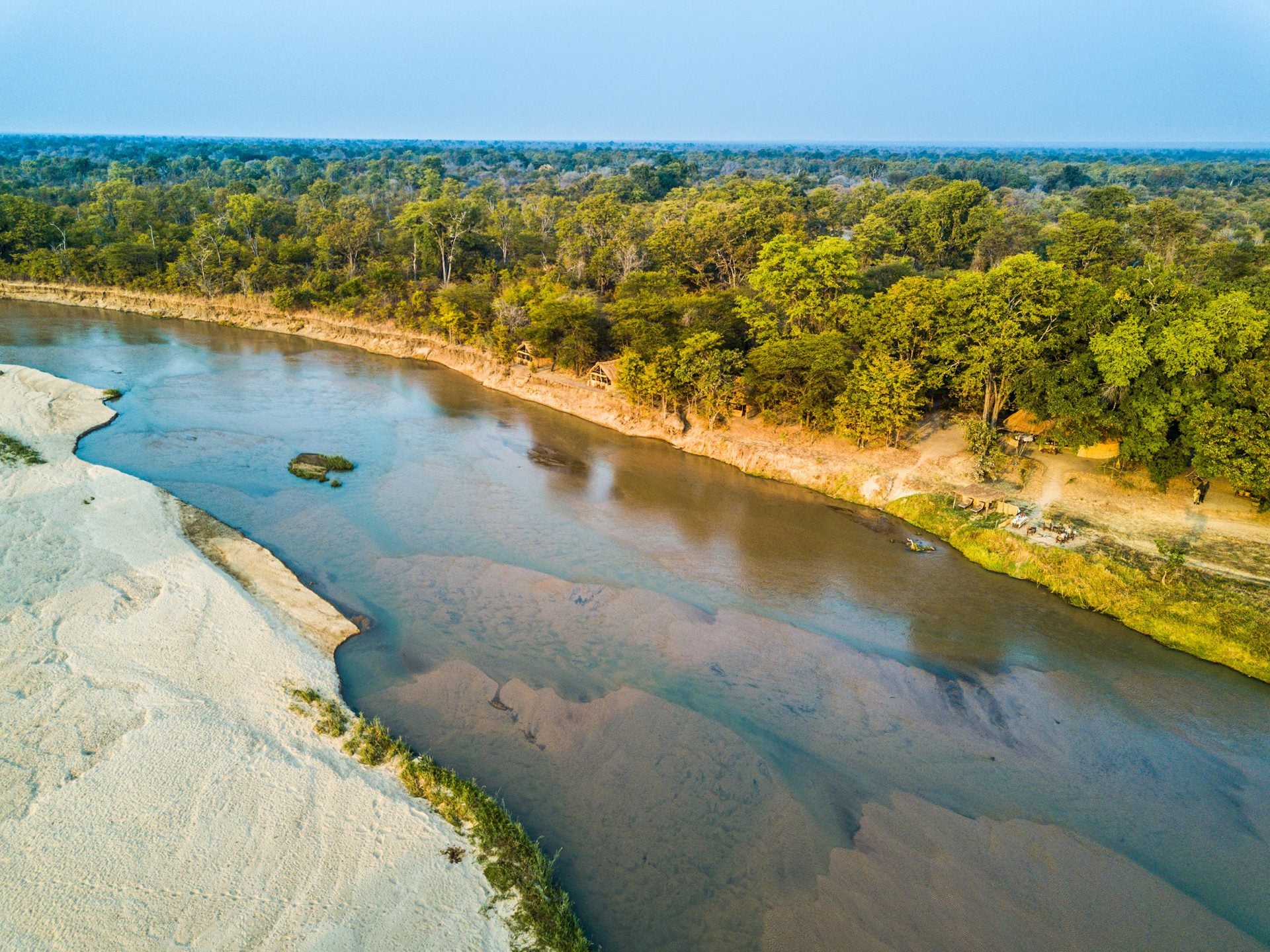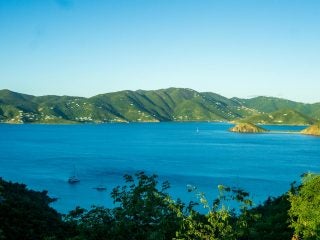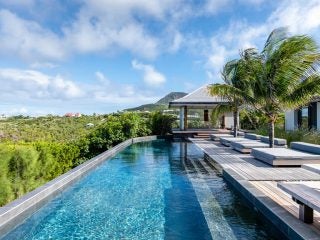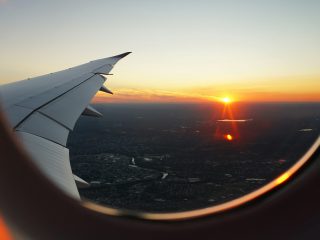By Jeff Silverstein
Going on an African safari and seeing big game like lions and leopards is at the top of most people’s bucket list, but what if you could do that, and have the ultimate wellness trip at the same time.
That’s exactly what we experienced on a recent walking safari in Zambia.
The most experienced safari travelers have long known that Zambia is one of the best places in all of Africa to go on safari. The rich and varied habitat of the bush offers up amazing opportunities to find a variety of species and observe remarkable concentrations of wildlife including the Big Five: lion, leopard, elephant, rhinos and Cape buffalo.
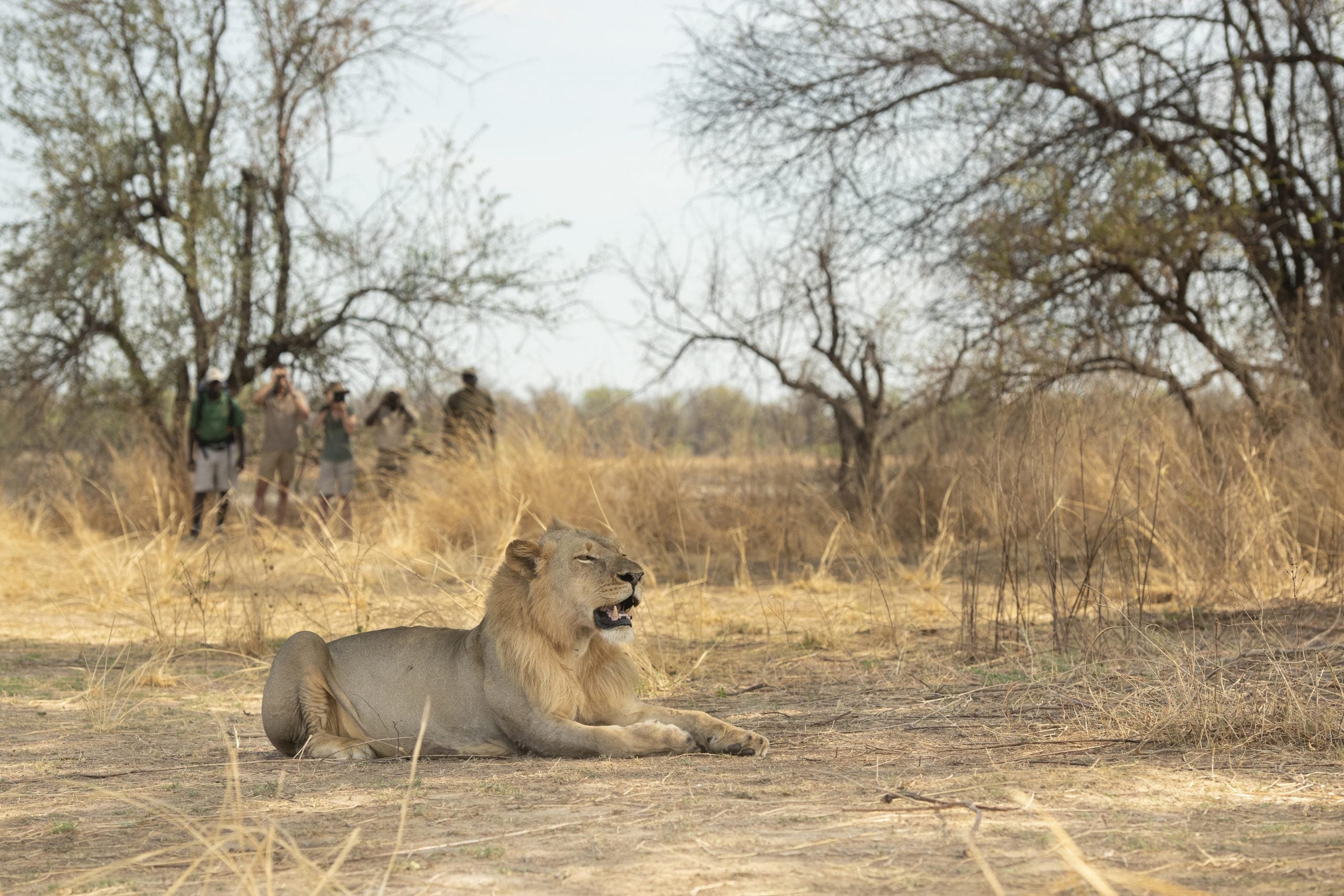
But it’s the ability to get into remote areas of wilderness with great game capacity, stay in very small camps, have a five star experience and not have to share that with too many other people that sets Zambia apart.
Despite this incredible wildlife heritage, for the longest time, this landlocked country in south central Africa managed to fly under the radar. All of that, though, is slowly changing as more and more people discover the magic of Zambia and the beauty that can be found in the quiet simplicity of the bush.
Nick Aslin who runs Zambian Ground Handlers and works with many of the camps providing on-the-ground support, marketing and logistics, put it this way: “A safari in the Zambian bush remains one of the most magical, life-affirming travel experiences that you can have.”
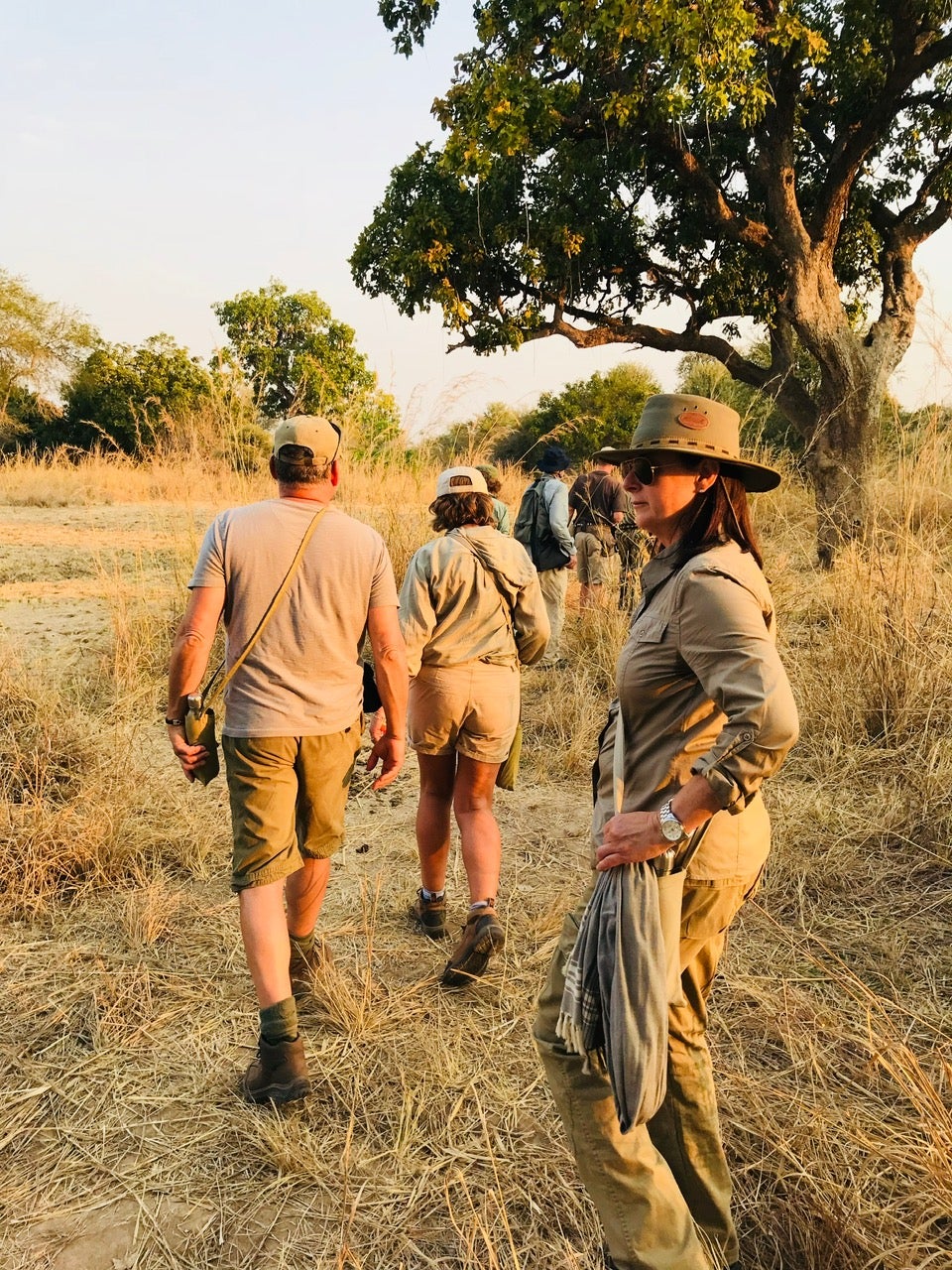
It’s easy to understand why there’s such a buzz now about Zambia.
The country is blessed with no fewer than 20 national parks and 36 game management areas that together account for about a third of the country’s total land area. Kafue National Park alone, Zambia’s largest national park, is 22,400 square kilometres – that’s about the size of Massachusetts or Wales.
It’s also home to some truly stunning habitat – open grassy plains, lush valleys, Winterthorn forests and mature woodlands that all intersect with one of Africa’s most iconic rivers, the Zambezi River. This happy confluence of the river and habitat is what draws intense concentrations of wildlife to the water.
It’s this abundant wildlife and high-quality intimate camps, together with the fact that strict guiding exams have helped to guarantee consistently high guiding standards, that make Zambia such an ideal safari destination. Sustainability and conservation are also woven into the very fabric of these camps, many of which are still owner-operated, something that is less and less common these days.
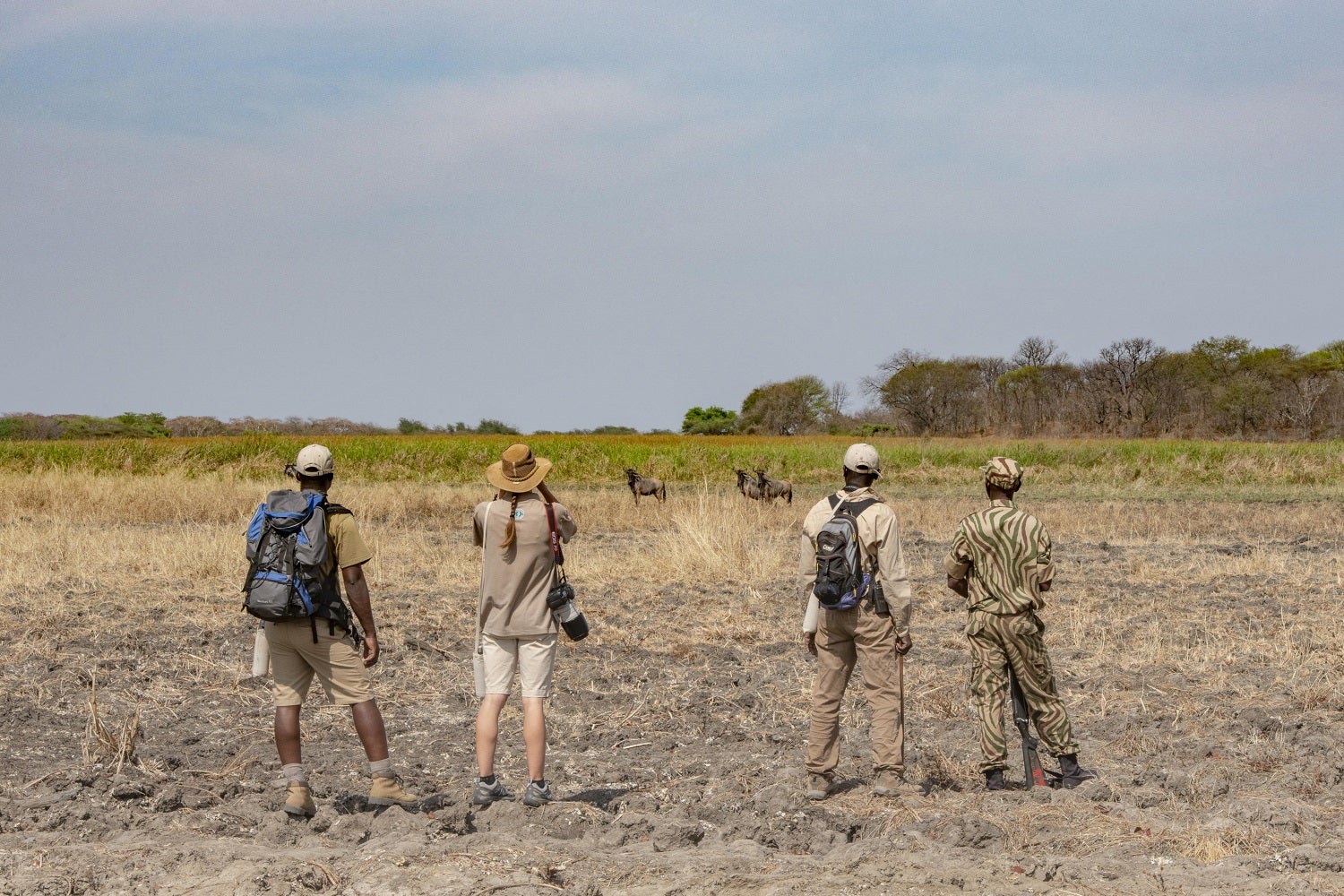
Whether it’s contributing to the cost of installing boreholes to supply clean water, doing important conservation work, providing employment opportunities, building schools, paying student fees or providing meals – sustainable tourism is pivotal to Zambia’s identity and economy.
This model of sustainable tourism has also been a major win for the country’s wildlife since the Department of National Parks and Wildlife (DNPW) falls under the Ministry of Tourism. What this means is the more successful Zambia’s safari camps are, the more resources they have to lead conservation efforts.
So it’s really a win, win, win – a win for those visitors lucky enough to experience the magic of Zambia, a win for those who manage and operate the lodges who not only employ Zambians who live in nearby villages but also help lead these conservation efforts, and a win for the wildlife since it helps to support the case that the land is best left to conservation.
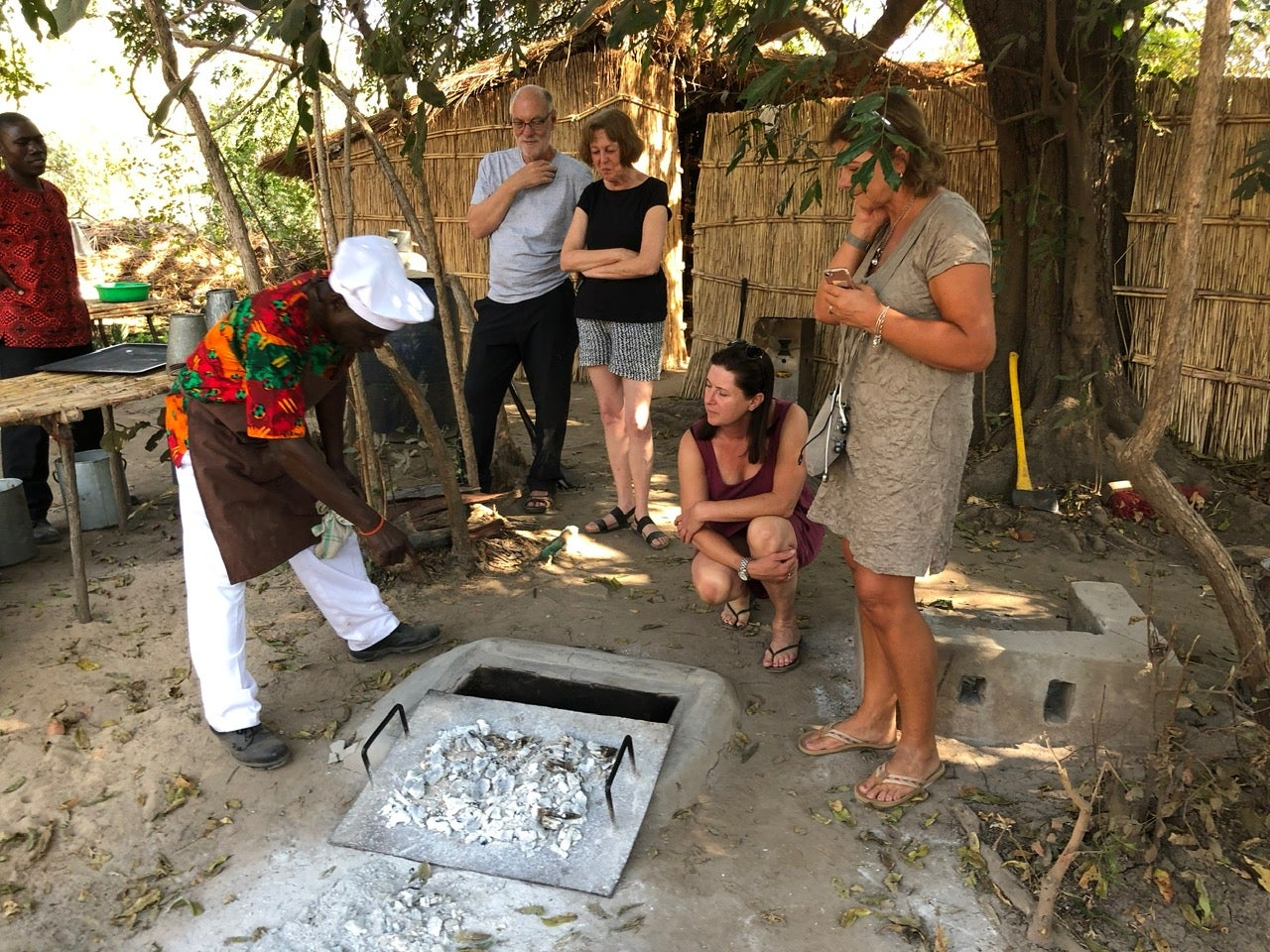
With so much to offer, from land and river safaris, from untamed luxury in the bush to more genuine, authentic bush camps that don’t skimp on luxury, the challenge when planning our trip was settling on which type of safari experience we were after.
Whether it’s a love of photography, birding, walking, exhilarating game drives or just wanting to unplug and feel more connected to the bush in untouched wilderness, there truly is something for everyone.
After much research we settled on Mwaleshi Camp, a camp that has made a name for itself as one of best walking camps in all of Africa.
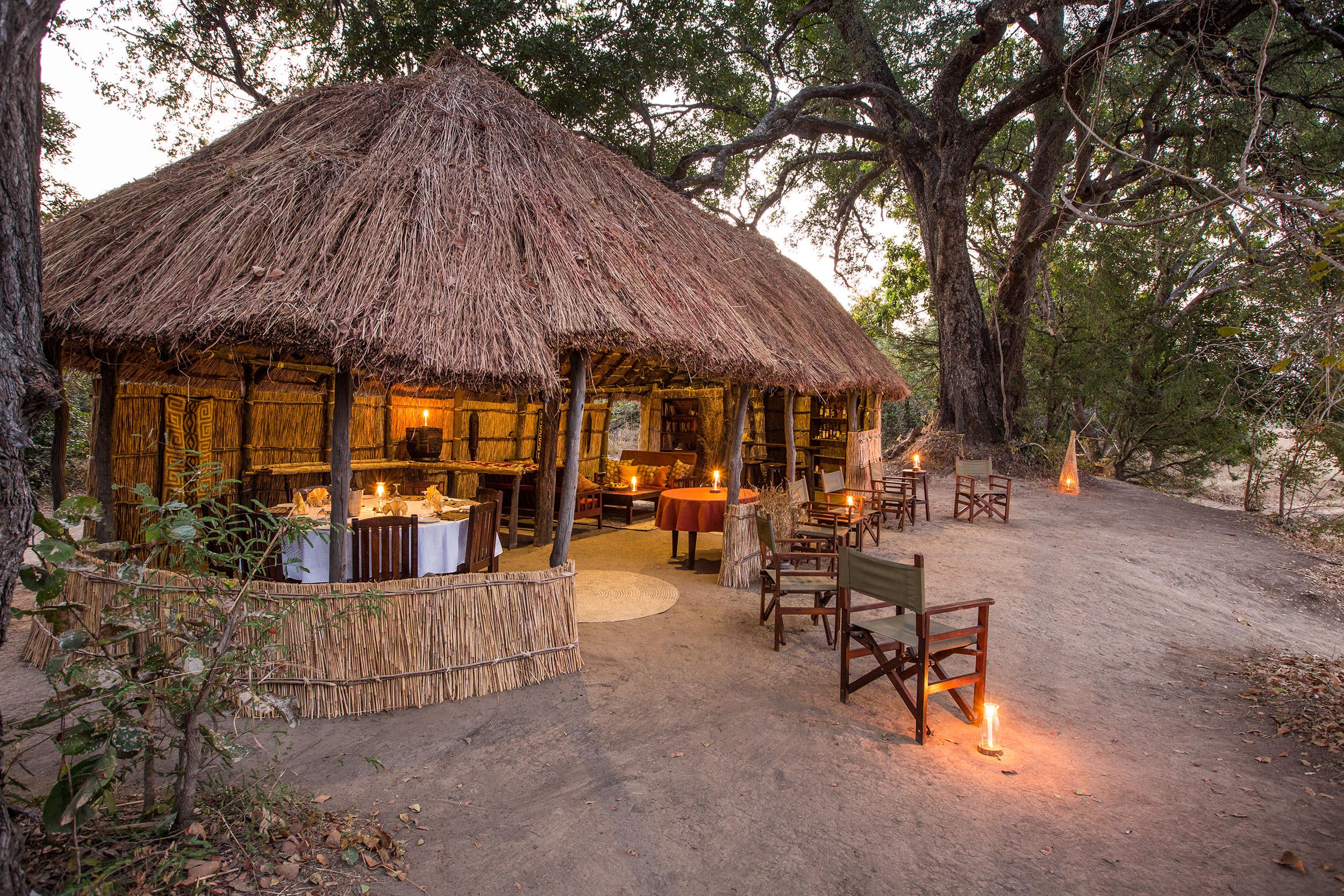
Located in the vast wilderness of North Luangwa National Park and sitting gently on the banks of Mwaleshi River – one of the biggest tributaries of Luangwa River – the camp is “properly in the bush” as one avid safari enthusiast put it.
This vast, undisturbed, intact landscape is home to significant numbers of wildlife and Mwaleshi Camp is one of only a handful of camps in the entire park. There’s literally no one else around for hundreds of kilometres.
Operated by Remote Africa Safaris, the beauty of the camp lies in its refreshing simplicity and intimacy. With uninterrupted views of the river and just four grass thatched chalets complete with polished mud floors and en-suite bathrooms with outdoor showers, the camp has a truly wild and rustic feel.
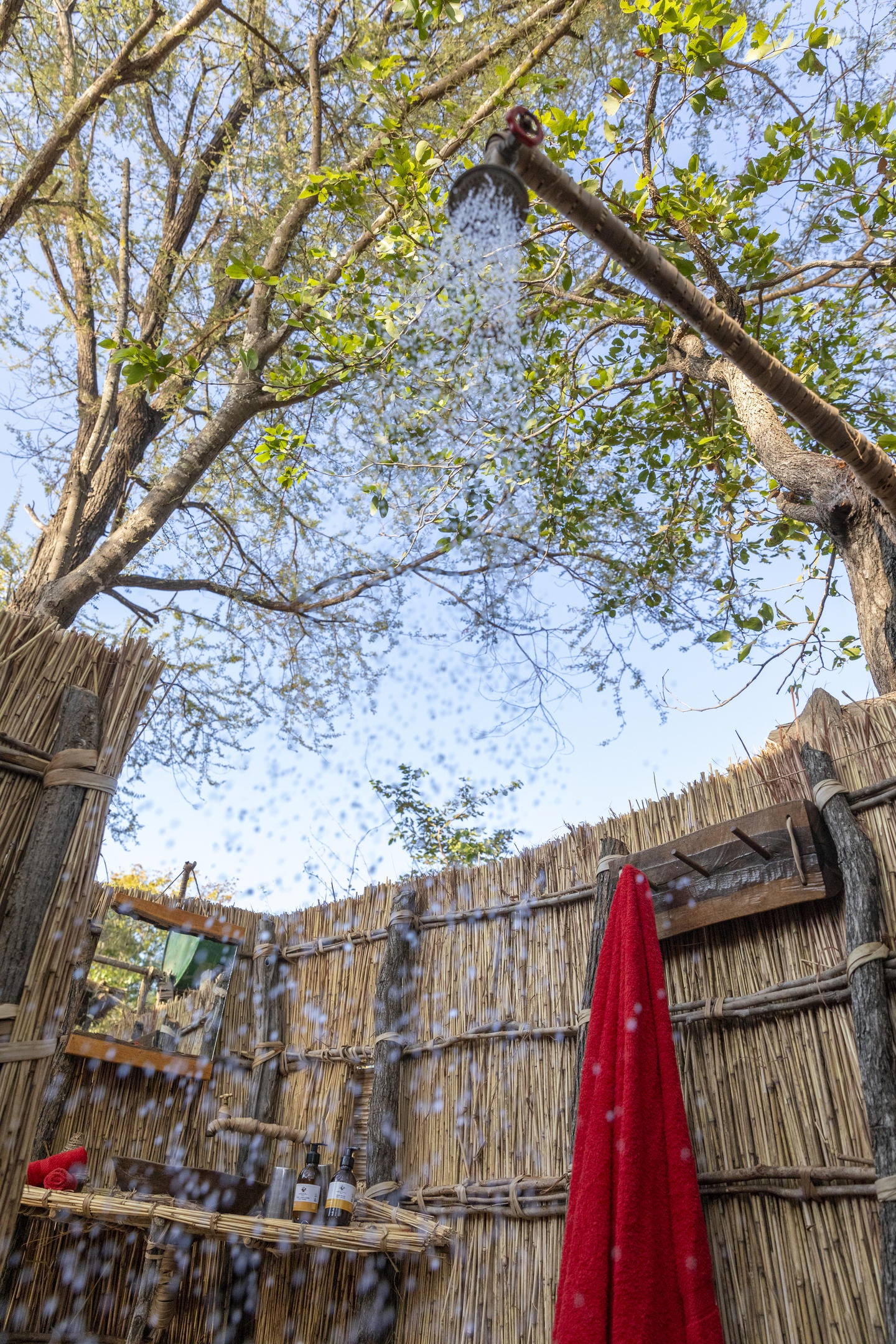
There are no boreholes, everything runs on solar, and there are no pumps or generators running, allowing the symphony of the bush to be heard in all its glory. Everything is done by hand. Even water is collected from the river and boiled in drums over an open fire, much the same way a traditional village operates.
And once you’ve settled into the rhythm of the bush, life at the camp becomes very slow and simple – much like the pace of the river and of village life in Africa.
The Mwaleshi River which wraps itself around the camp is very much a defining feature of the landscape. It’s a beautiful broad, shallow river that comes down from a nearby escarpment, and as the river and the sands shift, it creates lagoons and flood plains that attract plains game like sable antelope and buffalo and a host of predators that follow them.
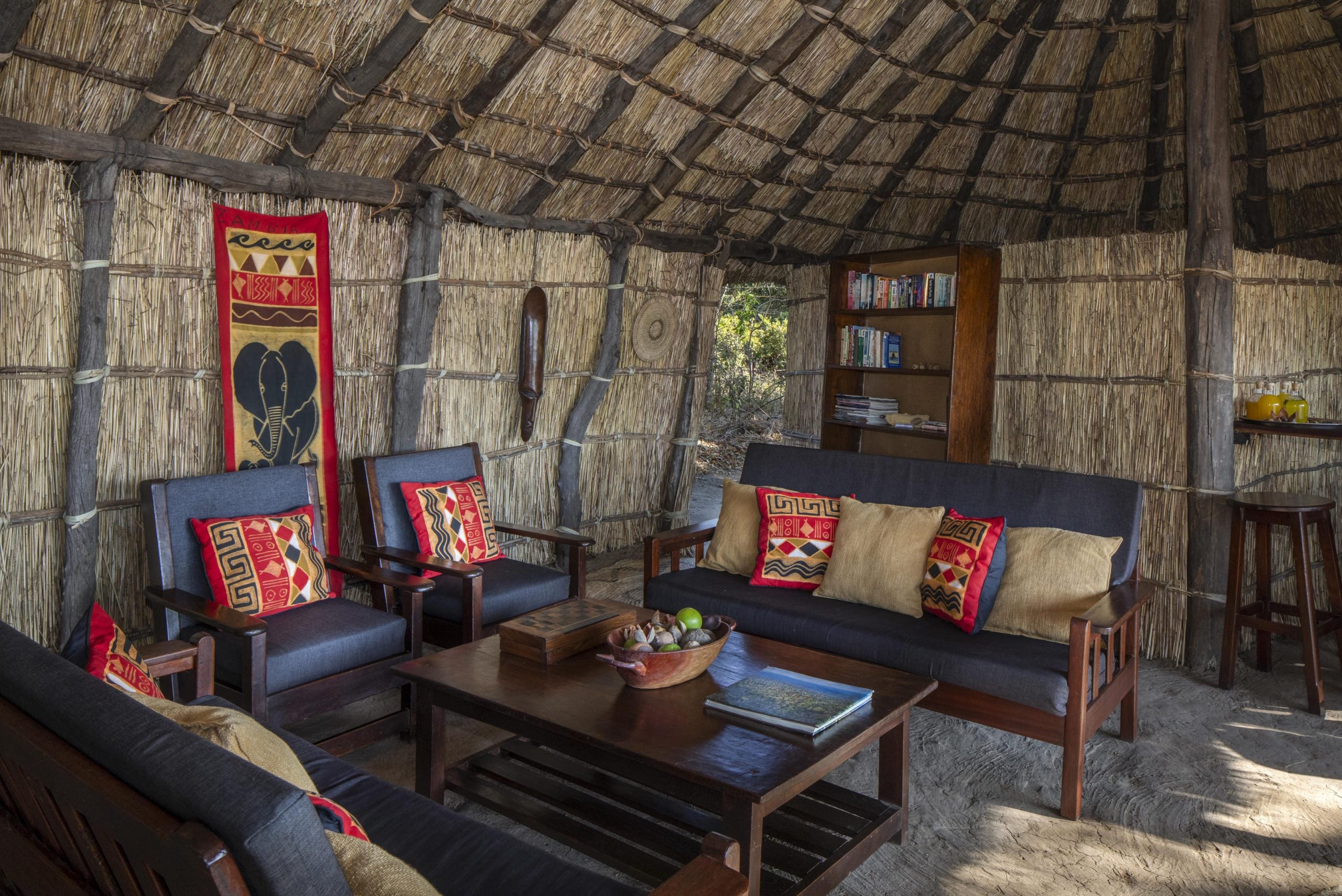
There really is nowhere else in Africa where you find this style of authentic camp offering solitude, seclusion, amazing game viewing, and a five star luxury feel. But it’s the camp’s sheer remoteness, and the fact that the majority of activities are done on foot that makes the camp so unique.
During our four day visit, we frequently set off in a vehicle to get to the head of a trail where we often crisscrossed the river in bare feet before putting on our boots and watching wildlife as it should be watched.
What we found is that in many ways, this was the ultimate way to experience the bush. You aren’t simply a spectator anymore viewing the bush and the wildlife from a vehicle. You are actually experiencing it on the ground. You are part of it, and that experience is infinitely more exciting and rewarding.
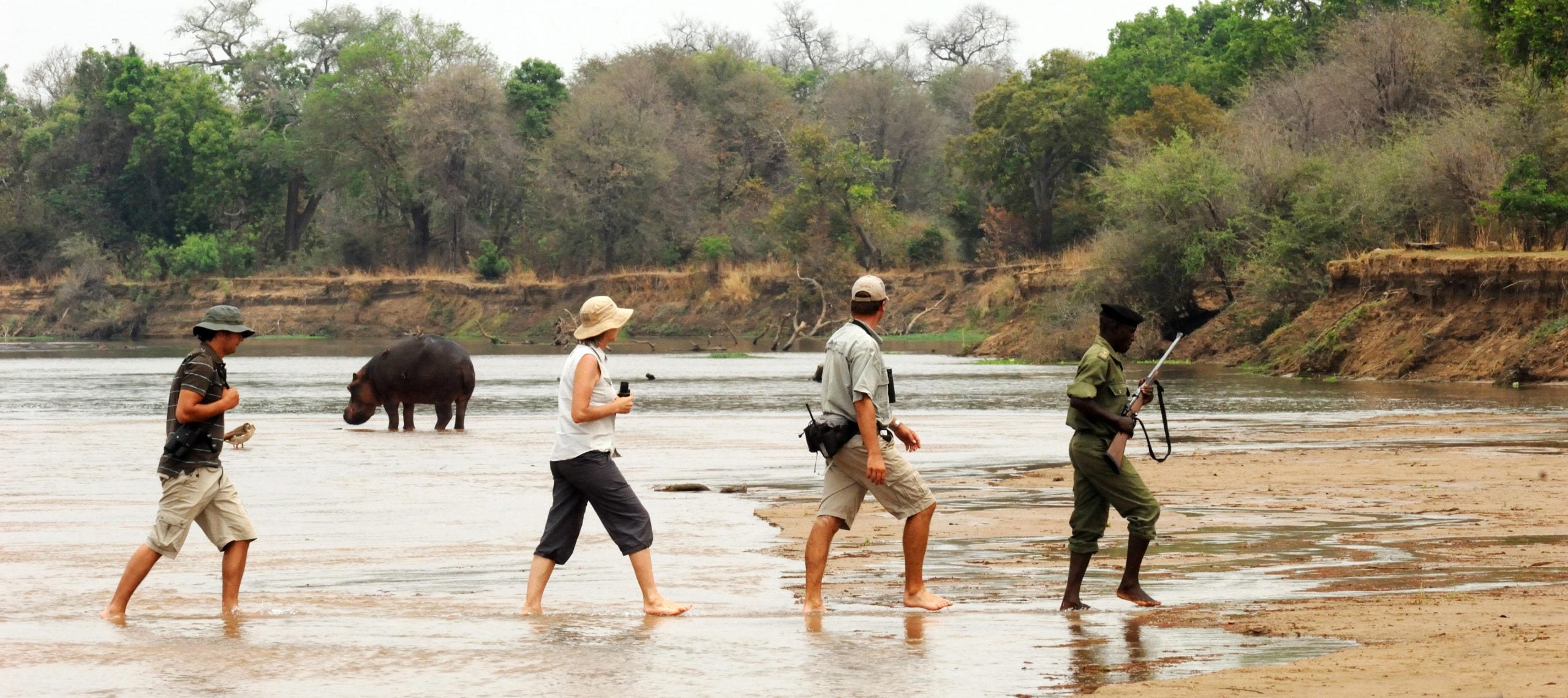
On an early morning game drive, or even a night drive, the game you encounter doesn’t tend to react. In fact, they see the vehicle as one big entity, and they are generally unbothered and very relaxed.
When you are on foot you are part of the whole experience, following fresh footprints and keeping a keen ear out for the wild barks and grunts of a bushbuck or baboon – an alarm that signals a predator is in the area.
On our walks, we would often stop and watch a drama unfold right before our eyes – the clashing jaws of a territorial hippo fight, elephants sauntering through the Winterthorn forest, kudu coming down to the water’s edge to drink – all from a vantage point where the animals did not know we were there, allowing us to observe them in a truly undisturbed way.

Zambia is one of the few countries in Africa where this is even possible. In fact, it’s where the walking safari got its start back in the 1950s by British conservationist Norman Carr in the untamed landscapes of South Luangwa National Park.
Our incredibly passionate and engaging guide, Brent Harris who grew up on a farm in South Africa and leads walking safaris throughout Southern Africa, described it this way: “On a walking safari, what is amazing is this sense of intimacy of being regarded by nature as well as regarding nature. When you are in a vehicle it’s a one way relationship. On foot it’s two way and multidirectional. You become one of the creatures of the bush and become integrated to the surroundings.”
Indeed, there’s something very special about experiencing the bush on foot, not least of which is the serenity of it all. The power of silence in our ever increasingly noisy world can’t be overstated – both for our bodies and our minds – and in many ways, connecting to the power and beauty of the African bush proved to be the ultimate detox.

Our senses became attuned and in sync with the environment and we found it to be the perfect place to find the space needed to deepen our connection to our surroundings and ultimately what really matters in life.
“Wellness after all is all about being fully immersed and integrated with the environment,” our guide Brent said. “It takes us back to a primal state. For us to get to full wellness ultimately means being in harmony with our environment.”
As Brent, whose bush skills were second to none, opened up the magic of the bush in ways that travelling in a vehicle just wouldn’t have been possible, I discovered that this vast wilderness was not only home to some of the most amazing wildlife, but the experience also proved to be an unexpected way of healing. My mind started to slow down and I began to appreciate my surroundings in a whole new light. There was a sense of peace that permeated every part of my being.
Indeed, what I found is walking allowed us to get more immersed in the details. What we were connecting with felt a lot richer. Rather than taking photos of a lion from a jeep, it was the rich tapestry of what the lion is walking through that we experienced.
When you see things from ground level it also offers up a different perspective on how the cycles of nature impact the movement of game, which in turn affects the movement of predators.
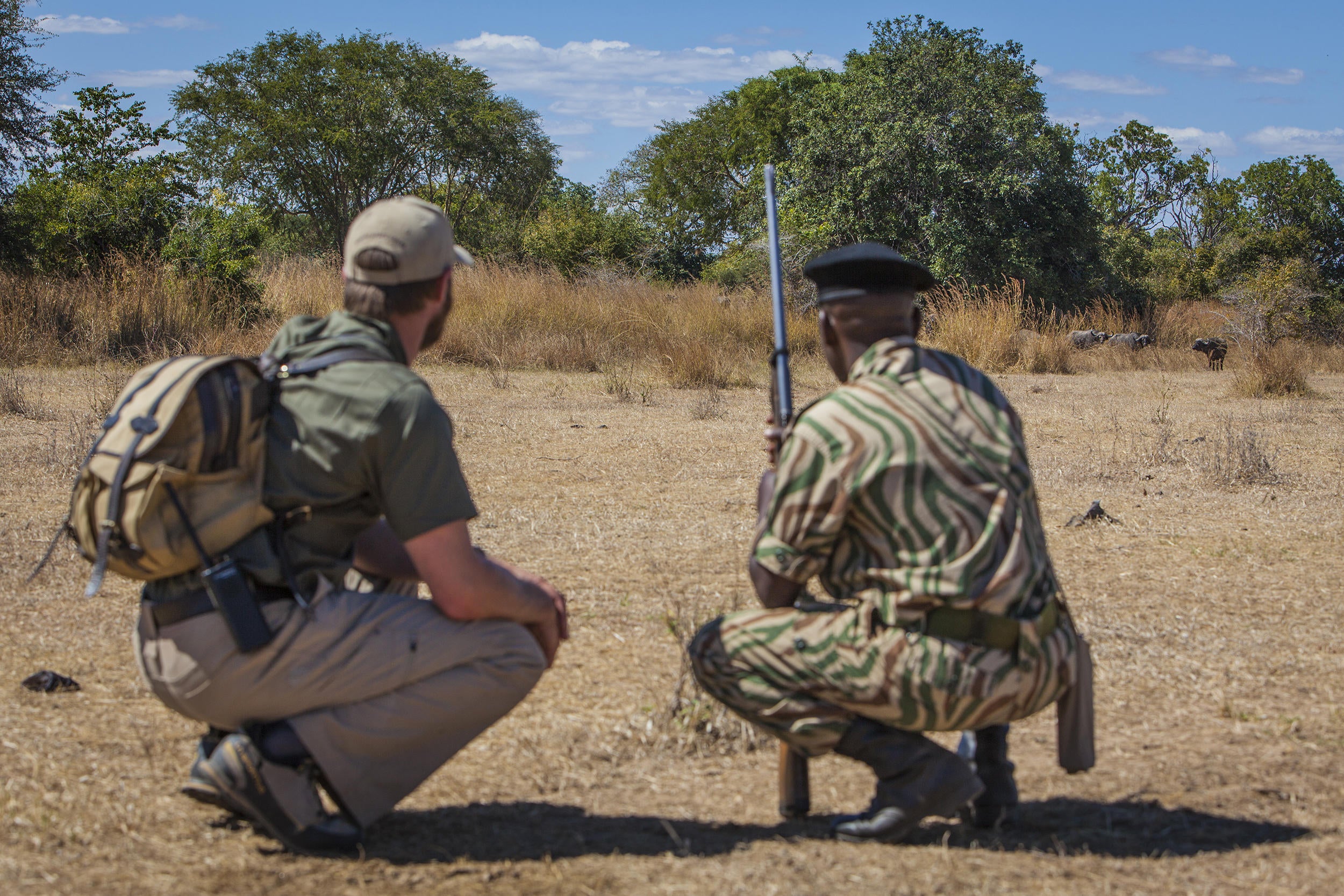
On all our walks, joining our guide was an armed escort or scout employed by the national parks department. These two distinct roles allowed Brent to focus his attention on guiding knowing that the scout had us covered and could get us to safety if need be.
It’s rarer and rarer these days to find a place surrounded by nothing but wilderness and wildlife.
Many safari destinations these days can feel busy and you can’t help but be aware of the presence of other people. At Mwaleshi Camp there’s a feeling of nothing but wilderness.
Amanda Young who grew up in Zambia and often travelled to the bush growing up, is now designing and curating Zambian safaris for a Toronto-based company called Karibu Adventures whose handful of trips focus very much on sustainability. She told me that Mwaleshi Camp is a real gem waiting to be discovered. “The country is so blessed with such diversity – not just in terms of the amazing game viewing, but the camps themselves are all first rate. But when it comes to remoteness, it doesn’t get much better than Mwaleshi.”
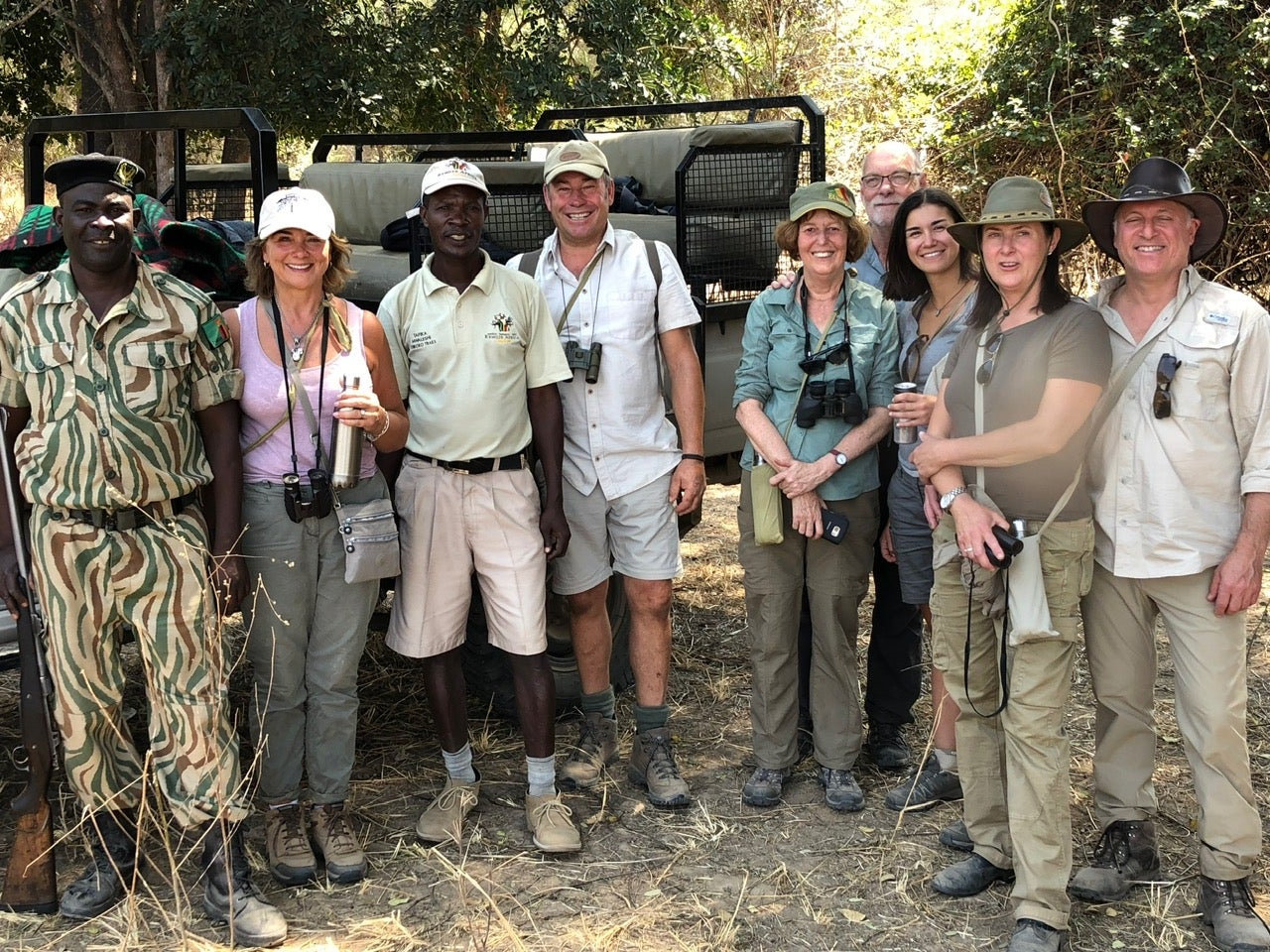
Indeed, it’s the presence of very little else that is so enchanting. It’s the solitude, the purity, and the untouched state of the place that is so special.
“When you are on a walking safari, the wildlife find the presence of humans threatening,” Brent said. “They are less habituated – everything is hyper responsive to our presence and the whole experience becomes very wild which of course requires one to be more alert. That’s the privilege of a walking safari – to be present in the moment because you need to be.”
Brent was someone who not only understood the bush in ways that only an expert guide would, but he was someone who understood wellness in a very deep way, and in many ways, that was the key. He not only made it an incredible adventure, but also a form of healing travel.
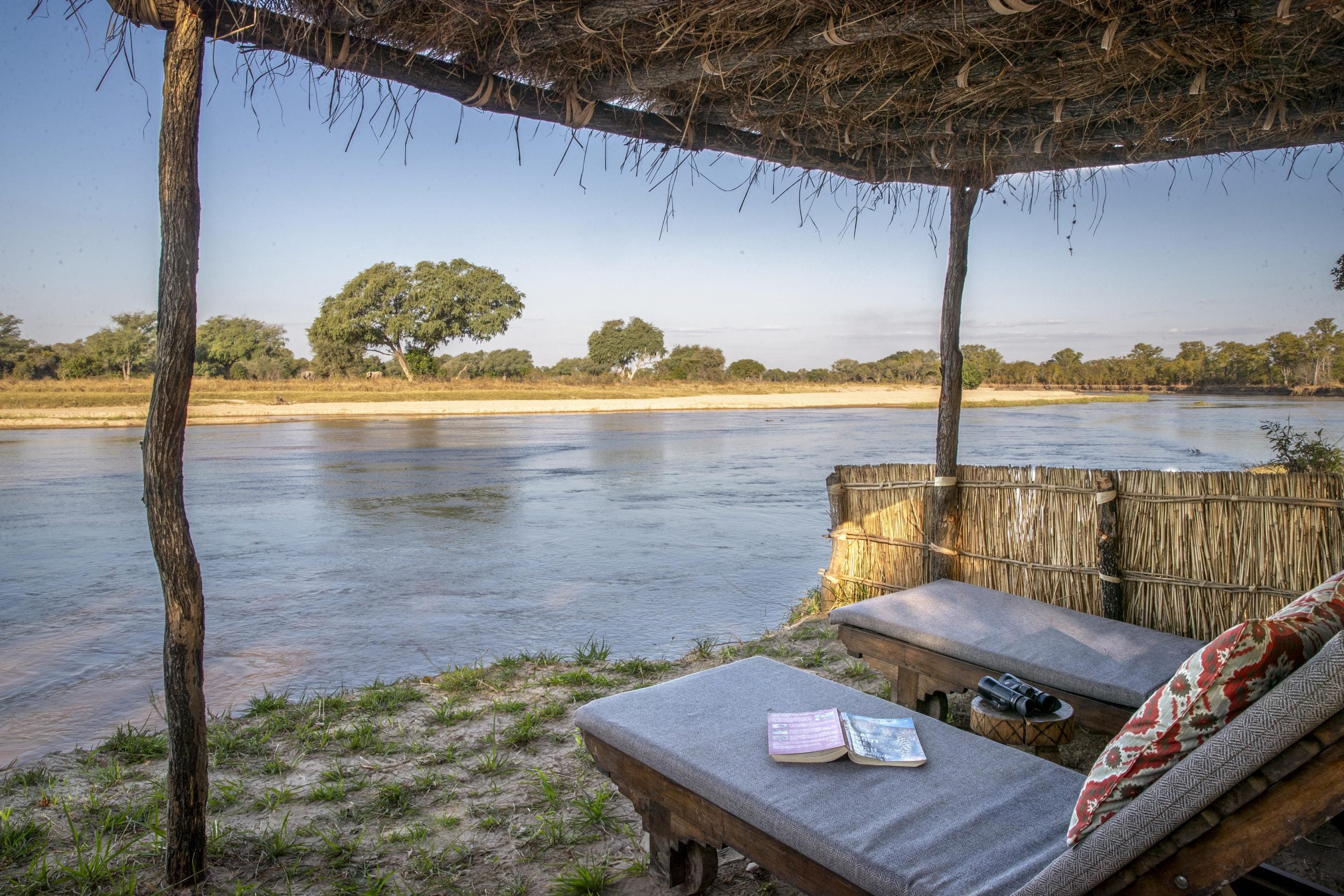
The whole experience gave us the opportunity to become more aware of what we belong to, what we are made up of, and what we are a part of which is the fresh air, the soil, the quietness and the space – all of those things that make us feel at peace and in harmony.
Brent put it this way. “It’s about coming back to balance and learning to listen again and connect with our environment and pay attention to the surroundings. It’s about bringing us back to this moment of existence that we tend to be absent from.”
It’s in moments like these when you are walking through the bush where you begin to feel part of something much bigger – you come back into deeper harmony. You feel like you are meeting nature on its terms, understanding it more deeply, and feeling a part of it.
It was in these moments of quietness, humility, and reverence when the healing happened – where we had a sense of belonging, and a sense of expanding our realization of what we actually belong to.
Resources:
Remote Africa Safaris
Karibu Adventures
Amanda Young: amanda@karibuadventures.com




